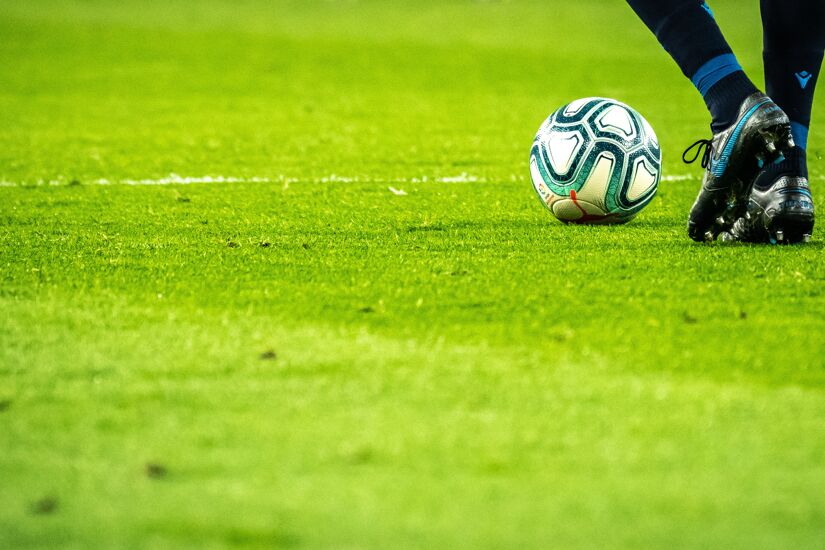The Dublin Derby: The Story of the Biggest Rivalry in the League of Ireland

Playing football Credit: None
Dublin’s rich history is mirrored in the fierce rivalry between two of its most storied football clubs, Bohemians and Shamrock Rovers. This long-standing clash, taking place at Dalymount Park and Tallaght Stadium, reflects more than just a sporting contest—it highlights a deep cultural divide within the city.
Rooted between the working-class northside and the more affluent southside, this rivalry has captivated fans for generations. To truly grasp the intensity of this battle, one must travel back to April 1923, when these two clubs faced off multiple times for superiority in Irish football. These matches added a spark to what would become one of Ireland's greatest sporting rivalries.
Rivalry refers to competition for the same goal or superiority in a particular field. In this case, it’s about territorial pride, cultural histories, and opposing claims, with both sides often clashing through a common platform—football. That said, let’s dive into the detailed story of the biggest rivalry in the League of Ireland.
Historical Context of the Rivalry: Dublin’s Social and Geographical Divide
The rivalry between Bohemians FC and Shamrock Rovers is deeply embedded in Dublin’s social and geographical divide. Founded in 1890, Bohemians, also known as Bohs, are rooted in the northside at Dalymount Park. On the other hand, Shamrock Rovers, established in 1899, have historically represented the working-class communities of the southside.
This divide reflected the city's socio-economic differences. Bohemians were traditionally seen as a more middle-class club with an amateur ethos, while Rovers embodied working-class grit and determination.
As both clubs rose in prominence, their rivalry intensified, especially during the 1920s when they competed for supremacy in the newly-formed Football Association of Ireland (FAI). This rivalry, shaped by geography and class, remains one of the fiercest in Irish football, with both sides striving for dominance to this day.
Key Moments in the Dublin Derby’s History and Off-the-Field Tensions
Several pivotal moments have defined the fierce rivalry between Bohemians and Shamrock Rovers. One of the earliest and most significant encounters was the 1929 FAI Cup Final, where Rovers triumphed 3-0 over Bohemians in a replay, solidifying their status as the “Cup Kings” of Irish football. In 1945, the rivalry reached new heights when Rovers won 1-0 in front of a record-breaking crowd of 45,000 spectators, the largest attendance ever recorded for an FAI Cup Final.
While rivalries can be fun, matches between both teams are usually intense. Off the pitch, tensions flared, with infamous clashes between fans, particularly in the 1980s and 2000s. Several provocative gestures were also recorded. For instance, a notorious incident in 2004 saw Rovers supporters throw a pig’s head onto the field, aimed at former players who had joined Bohemians. These dramatic moments have made the derby a cornerstone of Irish football history.
Bohemians vs. Shamrock Rovers Derby’s Rivalry Today
Today, the Bohemians vs. Shamrock Rovers rivalry remains the most anticipated fixture in the League of Ireland. The derby matches are marked by intense atmospheres, sold-out stadiums, and often unpredictable outcomes. While the physical fights and provocations have reduced significantly, the passion and fervor still run high among fans, bettors, and even regular locals who feel the weight of the rivalry in every Dublin Derby match. You can read more here about the best platform to wager on your favorite LOI events or other exciting real-money games.
Notably, Shamrock Rovers, now firmly established in Tallaght Stadium, have cemented their dominance in recent years. They secured the League of Ireland Premier Division title three consecutive times in 2020, 2021, and 2022. This added to their impressive record of 20 FAI Cup victories—the most in Irish football history.
Bohemians, still competing from their historic home at Dalymount Park, have proven to be strong challengers. They finished second in the league in 2020 and made it to the FAI Cup final in 2021. Despite financial difficulties in recent years, their competitive spirit and passionate fanbase keep the rivalry alive. In their 2023 league encounters, Shamrock Rovers won two out of the three meetings, with the other ending in a hard-fought draw, adding fuel to the fierce competition between the two Dublin giants.
Fans Perspectives and The Future of the Dublin Derby
For fans, the Dublin Derby is far more than just a football match—it's a deeply emotional and cultural battleground. Bohemians supporters take immense pride in their club's rich, century-old history and deep-rooted connection to Dublin's northside, while Shamrock Rovers fans embody the spirit of their southside heritage and Tallaght Stadium with unwavering loyalty.
On derby days, the atmosphere is electric—both sets of fans transform the stadiums into vibrant displays of noise, color, and passion. Whether at Dalymount Park or Tallaght Stadium, the tension and excitement are palpable, making each encounter a spectacle of Irish football.
Looking ahead, the future of the derby seems bright. Both clubs are heavily investing in modern infrastructure and youth academies, ensuring a competitive edge and long-term sustainability. However, challenges like increasing commercialization, potential league restructuring, and ambitions for European success could alter the landscape of the rivalry. Despite these changes, its legacy remains secure—guaranteeing the Dublin Derby will continue to be the highlight of the Irish football calendar for years to come.
Conclusion
The Bohemians vs. Shamrock Rovers rivalry, rooted in Dublin’s social and geographical divide, is one of Ireland’s most iconic football clashes. Since the 1920s, the Dublin Derby has delivered moments of drama, brilliance, and controversy. Beyond football, the rivalry is woven into Dublin’s cultural fabric. As both clubs look to the future, the intensity and passion continue to captivate fans, making the derby a lasting symbol of Irish football’s rich history and legacy.

